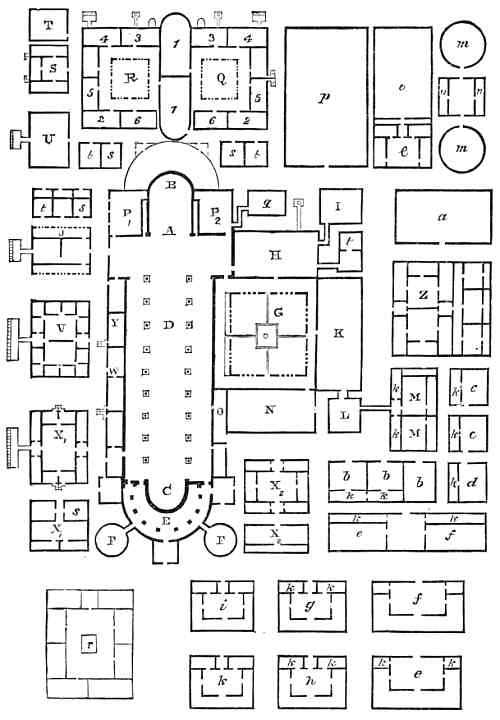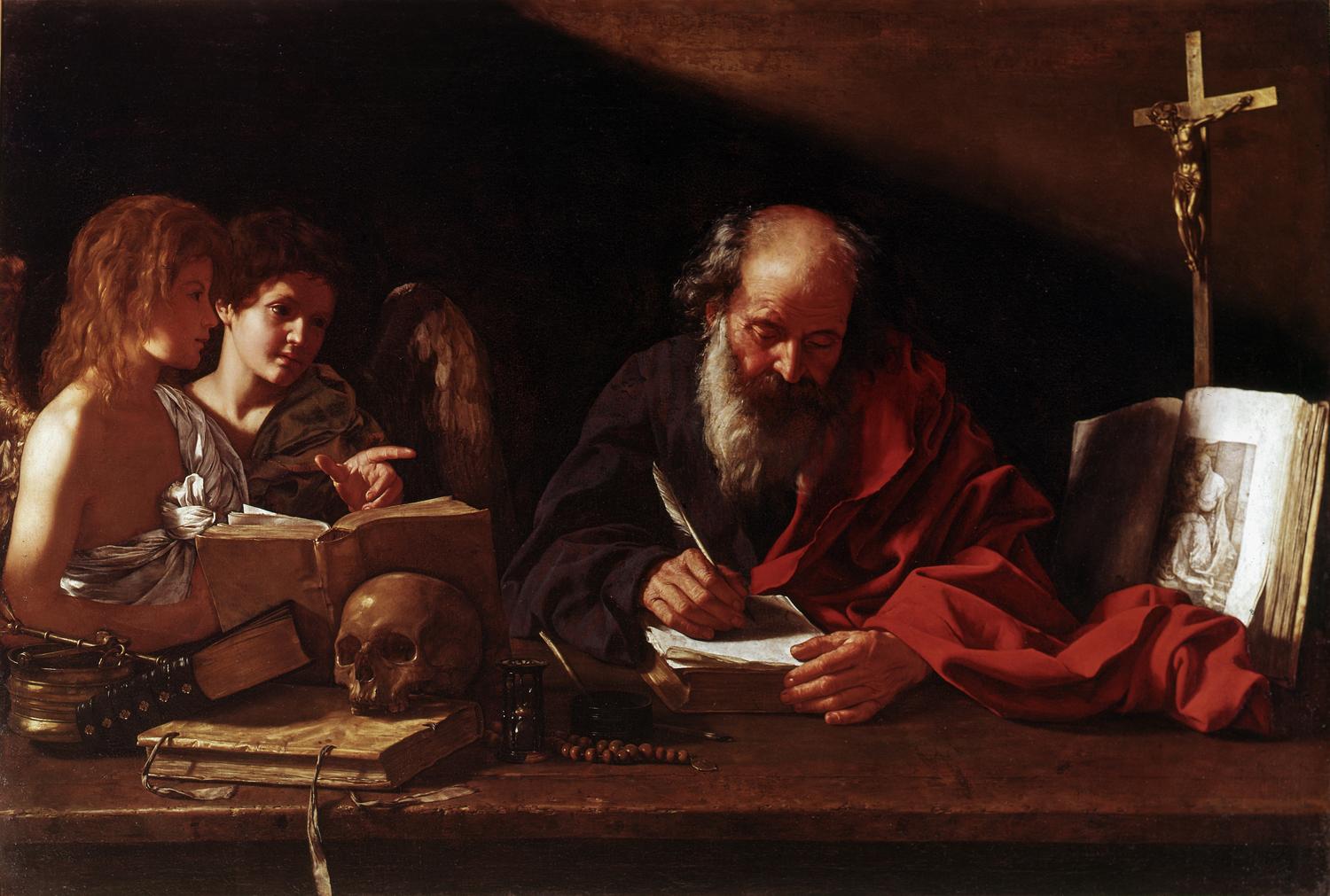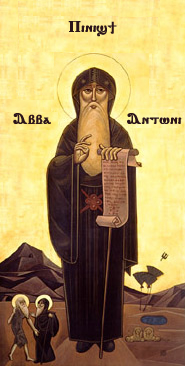|
Eastern Christian Monasticism
Eastern Christian monasticism is the life followed by monks and nuns of the Eastern Orthodox Church, Oriental Orthodoxy, the Church of the East and some Eastern Catholic Churches. History Christian monasticism began in the Eastern Mediterranean in Syria, Palestine and Egypt where the Desert Fathers pioneered traditions that would influence both the Hesychast traditions of Eastern Orthodoxy as well as Western monastic traditions pioneered by John Cassian and codified in the Rule of St Benedict. The Early Church The mystical and other-worldly nature of the Christian message very early laid the groundwork for the ascetical life. The example of the Old Testament Prophets, of John the Baptist and of Jesus himself, going into the wilderness to pray and fast set the example that was readily followed by the devout. In the early Christian literature evidence is found of individuals who embraced lives of celibacy and mortification for the sake of the Kingdom of Heaven, these individua ... [...More Info...] [...Related Items...] OR: [Wikipedia] [Google] [Baidu] |
Kingdom Of God
The concept of the kingship of God appears in all Abrahamic religions, where in some cases the terms kingdom of God and kingdom of Heaven are also used. The notion of God's kingship goes back to the Hebrew Bible, which refers to "his kingdom" but does not include the term "Kingdom of God". The "Kingdom of God" and its equivalent form Kingdom of Heaven (Gospel of Matthew), "Kingdom of Heaven" in the Gospel of Matthew is one of the key elements of the teachings of Jesus in the New Testament. The Gospel of Mark indicates that the gospel is the good news about the Kingdom of God. The term pertains to the Christ the King, kingship of Christ over all creation. The phrase "Kingdom of heaven" appears in Matthew's gospel due primarily to Jewish sensibilities about uttering the "name" (God). Jesus did not teach the kingdom of God ''per se'' so much as the ''return'' of that kingdom. The notion of God's kingdom (as it had been under Moses) returning became an agitation in Roman Palestin ... [...More Info...] [...Related Items...] OR: [Wikipedia] [Google] [Baidu] |
Skete
A skete () is a monastic community in Eastern Christianity that allows relative isolation for monks, but also allows for communal services and the safety of shared resources and protection. It is one of four types of early monastic orders, along with the eremitic, lavritic and coenobitic, that became popular during the early formation of the Christian Church. Skete communities usually consist of a number of small cells or caves that act as the living quarters with a centralized church or chapel. These communities are thought of as a bridge between strict eremitic lifestyle and communal lifestyles since it was a blend of the two. They were a direct response to the ascetic lifestyle that early Christians aspired to live. Skete communities were often a bridge to a stricter form of hermitage or to martyrdom. The Greek term skete (σκήτη, ''skḗtē'', ''skiti'') is most likely a reference to the Scetis valley in Egypt Egypt ( , ), officially the Arab Republic of ... [...More Info...] [...Related Items...] OR: [Wikipedia] [Google] [Baidu] |
Theodore Of Egypt
Theodorus of Tabennese (c. 314 – 368), also known as Abba Theodorus and Theodore the Sanctified, was the spiritual successor to Pachomius and played a crucial role in preventing the first Christian cenobitic monastic federation from collapsing after the death of its founder. Biography According to hagiography, Theodorus was born into a wealthy Christian family and was well educated from a young age. Early in life he denied the excesses of his parents, and at the age of fourteen joined a monastery in the diocese of Sne, near the modern town of Esna, Egypt. A brother from Theodorus’ monastery stayed with Pachomius in Tabennese while traveling and preached of the virtues of the Koinonia upon his return to Sne. Praying and weeping, Theodorus became determined that his destiny lay with Pachomius. Although initially denied passage to Tabennese by a Pachomian monk due to his wealthy background, Theodorus opted to follow the visiting monk, and his persistence (and lack of obe ... [...More Info...] [...Related Items...] OR: [Wikipedia] [Google] [Baidu] |
Tabennisi
Tabenna is a Christian community founded in Upper Egypt around 320 by Saint Pachomius. It was the motherhouse of a federation of monasteries known as the ''Koinonia''. At the time of Pachomius's death in 346, there were nine establishments for men and two for women, along with two or three thousand "Tabennesites". It is considered the first major model of cenobitic monasticism in early Christianity. Name and location Tabenna (also Tabennae, Tabennisi, Tabennesi, Tabennese) is a Coptic name. The name and location of this monastery have long been the subject of great uncertainty. In the various manuscripts of the Lausiac History of Palladios (§ 32), the following Greek forms are found: Ταβέννησις, Ταβέννησος, Ταβενίσιος and Ταβένη. In Sozomene (III, 14), one manuscript gives (correctly) "έν Ταβεννήσῳ", but another incorrectly reads "έν Ταβέννη νήσῳ" in two words (with the word νῆσος, "island"). It is apparently ... [...More Info...] [...Related Items...] OR: [Wikipedia] [Google] [Baidu] |
Monastery
A monastery is a building or complex of buildings comprising the domestic quarters and workplaces of Monasticism, monastics, monks or nuns, whether living in Cenobitic monasticism, communities or alone (hermits). A monastery generally includes a place reserved for prayer which may be a chapel, Church (building), church, or temple, and may also serve as an Oratory (worship), oratory, or in the case of Cenobium, communities anything from a single building housing only one senior and two or three junior monks or nuns, to vast complexes and estates housing tens or hundreds. A monastery complex typically comprises a number of buildings which include a church, dormitory, cloister, refectory, library, Wiktionary:balneary, balneary and Hospital, infirmary and outlying Monastic grange, granges. Depending on the location, the monastic order and the occupation of its inhabitants, the complex may also include a wide range of buildings that facilitate self-sufficiency and service to the commun ... [...More Info...] [...Related Items...] OR: [Wikipedia] [Google] [Baidu] |
Abbot
Abbot is an ecclesiastical title given to the head of an independent monastery for men in various Western Christian traditions. The name is derived from ''abba'', the Aramaic form of the Hebrew ''ab'', and means "father". The female equivalent is abbess. Origins The title had its origin in the monasteries of Egypt and Syria, spread through the eastern Mediterranean, and soon became accepted generally in all languages as the designation of the head of a monastery. The word is derived from the Aramaic ' meaning "father" or ', meaning "my father" (it still has this meaning in contemporary Arabic: أب, Hebrew: אבא and Aramaic: ܐܒܐ) In the Septuagint, it was written as "abbas". At first it was employed as a respectful title for any monk, but it was soon restricted by canon law to certain priestly superiors. At times it was applied to various priests, e.g. at the court of the Frankish monarchy the ' ("of the palace"') and ' ("of the camp") were chaplains to the Merovingian ... [...More Info...] [...Related Items...] OR: [Wikipedia] [Google] [Baidu] |
Cenobitic Monasticism
Cenobitic (or coenobitic) monasticism is a monastic tradition that stresses community life. Often in the West the community belongs to a religious order, and the life of the cenobitic monk is regulated by a religious rule, a collection of precepts. The older style of monasticism, to live as a hermit, is called eremitic. A third form of monasticism, found primarily in Eastern Christianity, is the skete. The English words ''cenobite'' and ''cenobitic'' are derived, via Latin, from the Greek words (, ), and (, ). The adjective can also be cenobiac () or cœnobitic (obsolete). A group of monks living in community is often referred to as a cenobium (Latin, from Greek ''koinobion''). Cenobitic monasticism appears in several religious traditions, though most commonly in Buddhism and Christianity. Origins The word ''cenobites'' was initially applied to the followers of Pythagoras in Crotone, Italy, who founded a commune not just for philosophical study but also for the "ami ... [...More Info...] [...Related Items...] OR: [Wikipedia] [Google] [Baidu] |
Saint Pachomius
Pachomius (; ''Pakhomios''; ; c. 292 – 9 May 348 AD), also known as Saint Pachomius the Great, is generally recognized as the founder of Christian cenobitic monasticism. Coptic churches celebrate his feast day on 9 May, and Eastern Orthodox and Catholic churches mark his feast on 15 May or 28 May. In Lutheranism, he is remembered as a renewer of the church, along with his contemporary (and fellow desert saint), Anthony of Egypt on 17 January. Name The name ''Pachomius'' is of Coptic origin: ⲡⲁϧⲱⲙ ''pakhōm'' from ⲁϧⲱⲙ ''akhōm'' "eagle or falcon" (ⲡ ''p''- at the beginning is the Coptic definite article), from Middle Egyptian ꜥẖm "falcon", originally "divine image". Into Greek, it was adopted as Παχούμιος and Παχώμιος. By Greek folk etymology, it was sometimes interpreted as "broad-shouldered" from παχύς "thick, large" and ὦμος "shoulder". Life Pachomius was born in c. 292 in Thebaid (near modern-day Luxor, Egypt) to pag ... [...More Info...] [...Related Items...] OR: [Wikipedia] [Google] [Baidu] |
Hermit
A hermit, also known as an eremite (adjectival form: hermitic or eremitic) or solitary, is a person who lives in seclusion. Eremitism plays a role in a variety of religions. Description In Christianity, the term was originally applied to a Christian who lives the eremitic life out of a religious conviction, namely the Catholic spirituality#Desert spirituality, Desert Theology of the Old Testament (i.e., the 40 years wandering in the Zin Desert, desert that was meant to bring about a change of heart). In the Christian tradition the eremitic life is an early form of Monk, monastic living that preceded the monastic life in the cenobium. In chapter 1, the Rule of St Benedict lists hermits among four kinds of monks. In the Roman Catholic Church, in addition to hermits who are members of religious institutes, the Canon law (Catholic Church), Canon law (canon 603) recognizes also Consecrated life#Other forms of consecrated life, diocesan hermits under the direction of their diocesan b ... [...More Info...] [...Related Items...] OR: [Wikipedia] [Google] [Baidu] |
Gospel
Gospel originally meant the Christianity, Christian message ("the gospel"), but in the second century Anno domino, AD the term (, from which the English word originated as a calque) came to be used also for the books in which the message was reported. In this sense a gospel can be defined as a loose-knit, episodic narrative of the words and deeds of Jesus, culminating in trial of Jesus, his trial and crucifixion of Jesus, death, and concluding with various reports of his Post-resurrection appearances of Jesus, post-resurrection appearances. The Gospels are commonly seen as literature that is based on oral traditions, Christian preaching, and Old Testament exegesis with the consensus being that they are a variation of Greco-Roman biography; similar to other ancient works such as Xenophon's Memorabilia (Xenophon), ''Memoirs of Socrates''. They are meant to convince people that Jesus was a charismatic miracle-working holy man, providing examples for readers to emulate. As such ... [...More Info...] [...Related Items...] OR: [Wikipedia] [Google] [Baidu] |
Anthony The Great
Anthony the Great (; ; ; ; – 17 January 356) was a Christian monk from Egypt, revered since his death as a saint. He is distinguished from other saints named Anthony, such as , by various epithets: , , , , , and . For his importance among the Desert Fathers and to all later Christian monasticism, he is also known as the . His feast day is celebrated on 17 January among the Eastern Orthodox and Catholic churches and on Tobi 22 in the Coptic calendar. The biography of Anthony's life by Athanasius of Alexandria helped to spread the concept of Christian monasticism, particularly in Western Europe via its Latin translations. He is often erroneously considered the first Christian monk, but as his biography and other sources make clear, there were many ascetics before him. Anthony was, however, among the first known to go into the wilderness (about AD 270), which seems to have contributed to his renown. Accounts of Anthony enduring supernatural temptation during his ... [...More Info...] [...Related Items...] OR: [Wikipedia] [Google] [Baidu] |





